King Otto gave many dukedoms and bishoprics to his friends and relatives. He extended his influence, not only just safeguarding the North and East, but pushed into Bohemia, Danemark and Poland to enforce his vassalage upon them.
It’s more than reasonable to assume that vassals of the Count of Tecklenburg were among those supporting the King, and the vassals sons came from the farms of our territory.
Was it adventurism or a left-over migratory instinct? We don’t know.
Both, the reigning nobility and his subjects were after the fortune of their life: The Count or Duke by the power of his sword and the poor vassal by the tempting idea of freedom.
Religious allegiances were forced upon, only few freely chosen.
While Charlemagne initially decreed Christianity in his territory in Central Europe, later on, religious matters throughout Central Europe were top-down decisions, either by religious or secular rulers. The rule always was: “The folk goes, as the ruler goes”.
Quarrels within the Catholic Church during the Middle Ages, leading up to the Reformation with all its consequences, had two noticeable effects in reference to the topic of this book:
At the home base, the Reformation caused changes as well. Shortly after Luther’s Proclamation in Wittenberg, the Count of Tecklenburg, the secular ruler in our area at that time, turned very soon “Lutheran Reformist”, and this is still today very much reflecting statistical religious affiliation there. While the territories surrounding the old County of Tecklenburg (“Grafschaft Tecklenburg”), the bishoprics of Osnabrück, Münster and Bentheim re-mained Catholic, the present day County of Tecklenburg is still mostly a Lutheran-Reformist island.
Those, who emigrated took usually their belief with them and started, particularly in America, a “bottom-up” Christian Community”. This is still very evident in the active church life in their specific communities today, as
well as the many signs of the past, such as the grave-yards of prior generations.
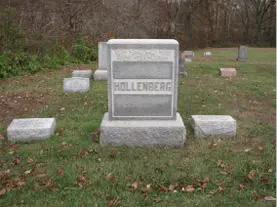
If we compare changes in the Church-Life in general in America and in Europe, it becomes obvious that the voluntary approach, the “bottom-up version”, is by far the better path for a viable religion when com-pared to the historical “bottom down version” in Central Europe.
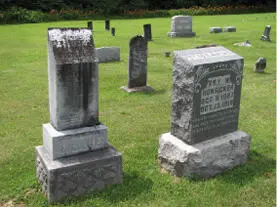
Early Middle-Age Housing Details in the Area
In the mean time, many things around the house and home had changed: (fig.:#14/15)
The older types as shown had developed into various designs of half-timbering structure, characteristically repre-senting even today forms of checker-works of the “Lower-Saxony-Farm-House”.
The simplified version shows how the principle of men and live-stock under one roof was kept.
(fig.:#14)
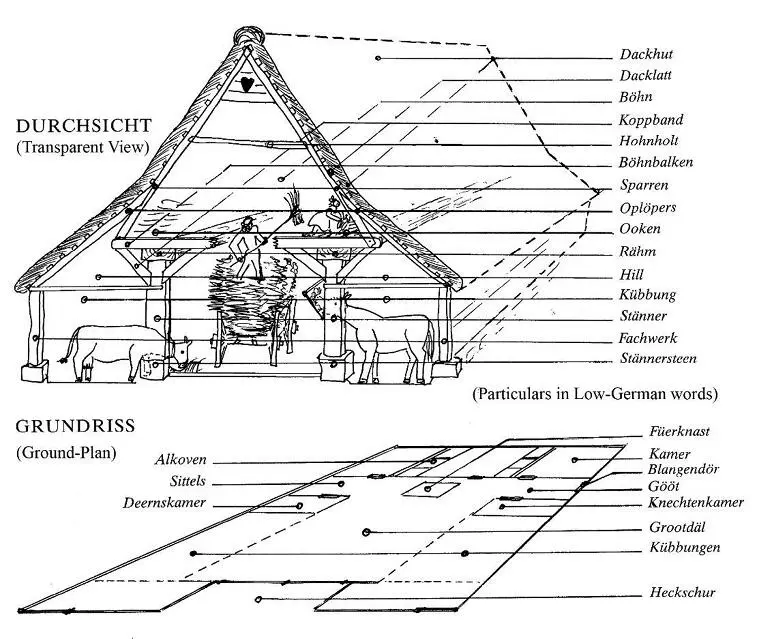
The following picture (fig.:#15) gives an indication of gradual changes till the 18th and early 19th century.
Development of the characteristic checker-works farmhouse in Lower-Saxony.
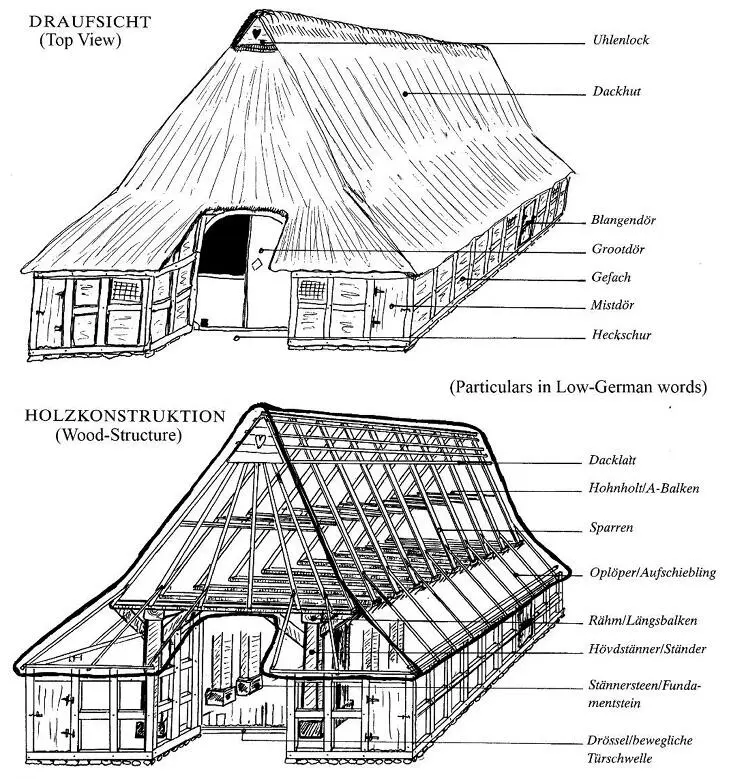
These typical farm buildings (fig.:#16) were rugged and simple in construction with some comfort for the inhabi-tants, but basically covering the needs of day by day living. Throughout that period and way into the 19th century, 4/5 of the population was living on farms or making a living of farm related activities.
(fig.:#16)
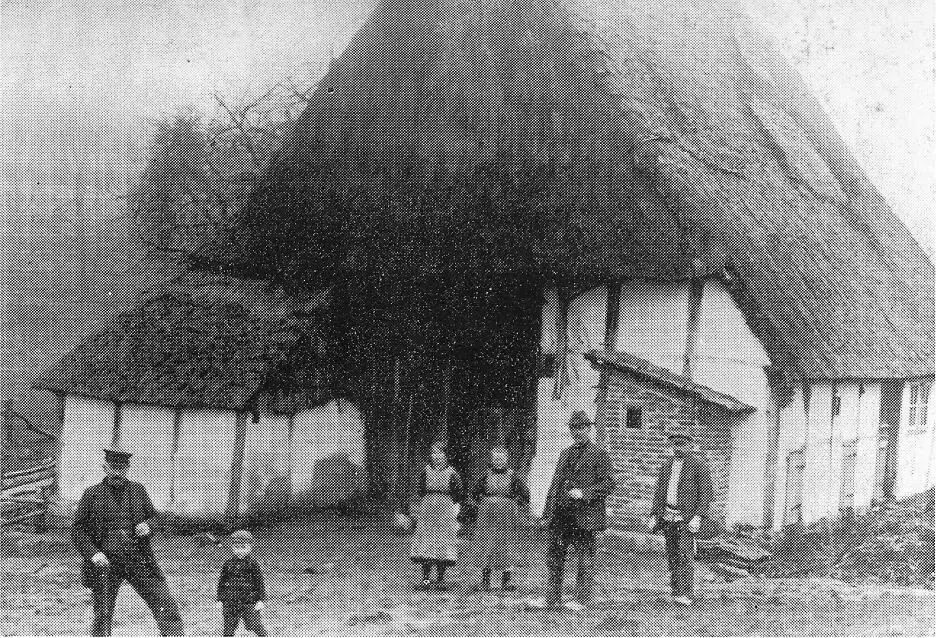
The “Befiefing” of Old Farms in the Parish of Cappeln
As mentioned before, the Hollenberg property was befiefed on April 14th of the year 1146 A.D. by the Bishop of Osnabrück and the Assembly of the Ecclesiastical Council.
This type of “Befiefing” did change in many ways over the centuries, for example: on September 27th, 1350, the place of “Bernhard to Veldeste” (presumably = Feldmann) in the “Parochia Cappeln” is named, where the Bishop of Osnabrück gives the rights of the tithe from B. to Veldeste to an “Arnoldus de Scarghe”: Thus meaning, that the bishop passed-on his rights of the tithe from one party to another third party.
Exemplary, at the same year, a certain “Johann Wesselmann” paid 12 Denare to the bishop.
During that period, the parish of Cappeln was the only community in the area which produced more grain than needed. This rural prosperity is well documented in the oldest available taxation register of the Count of Tecklen-burg from 1494 A.D. The community of Cappeln shows 42 farm places required to deliver 58 pigs. In contrast, the larger parish of Ibbenbüren with 45 farms owed 39 pigs.
The contribution varied over the centuries in details and content as well as the corresponding addressees. The “Befiefing” was the imposition of contributions initially organized by the Church with the backing by the “Fran-conian Law” established by Charlemagne, and lasted throughout the Middle-Ages till modern times; e.g. in parts of Prussia, including the territory of the province of Westphalia.
During that period, the tithe holder could change and in fact did change many times, e.g., from ecclesiastical persons or entities to secular parties, or to a combination of both.
One example as reported in 1836 for the Niederste-Hollenberg place goes as follows:
1.) Contribution to the King of Prussia in form of taxation:
a.) On the basis of a 10 year average
b.) Tax on cultivated acreage
2.) Contribution to local clergy:
a.) To the First Pastor:
i. A sheaf of grain (1 bushel)
ii. Sausages and bread
iii. One carriage with horses and helper for ½ a day per year
b.) To the Young Preacher:
i. ½ bushel of grain – rye
c.) To the Sexton:
i. A sheaf of grain (1 bushel)
ii. A truss of rye
Some of the above lasted all the way into the 20th century.
In addition to the above, it’s worth noting that the local pastor was doing some farming himself. As described earlier, “Charlemagne established the tithe in the area”: Based on that ruling, the tax register from 1577 A.D. showed the pastor in Cappeln had: 3 horses, 6 cows, 6 young cattle, 5 pigs and he paid per year a onetime tax of 4 Taler, 18 Schilling.
Outside common property, all real-estate was owned by either, the sovereign, the Church and monasteries or the nobility. Thus, all tithe-debtors were with their total property subject to a harsh bondage system.
The un-free farmers were called “Colonus” and those in the County of Tecklenburg were vassals to the Count there till 1707 A.D. and thereafter to the King of Prussia.
However, over time, parties on the receiving end found ways and means to extent and increase the already heavy burden on top of the original “tithe” ruling = 10% on all income. Those extra obligations are described in a refe-rence case of a vassal-farmer in the parish of Lienen as follows:
(ref.: Archive-Urbarium-Hartkotten from 1788 A.D. – between landlord von Korff and a number of farms who were his debtors ).
Читать дальше

















